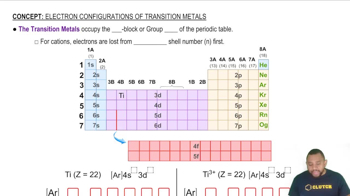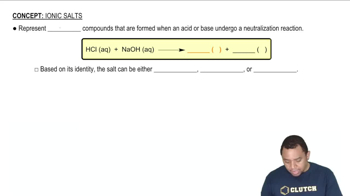Here are the essential concepts you must grasp in order to answer the question correctly.
Transition Metals
Transition metals are elements found in the d-block of the periodic table, characterized by their ability to form variable oxidation states and colored compounds. They typically have partially filled d orbitals, which play a crucial role in their chemical properties and reactivity. In period 4, these metals include Scandium (Sc) to Zinc (Zn), each exhibiting unique behaviors based on their electron configurations.
Recommended video:
Electron Configuration
Electron configuration describes the distribution of electrons in an atom's orbitals. For transition metals, the 3d and 4s orbitals are particularly important. Understanding the electron configuration helps determine which elements can lose electrons to form ions, especially those with partially filled d orbitals, which are essential for the formation of various oxidation states.
Recommended video:
Electron Configuration Example
Ionic vs. Neutral States
Ionic states refer to the charged forms of elements that result from the loss or gain of electrons, while neutral states have no net charge. Transition metals can exist in multiple ionic states, depending on their electron configurations. Elements that do not form ions with partially filled 3d orbitals typically have either fully filled or empty d orbitals, limiting their ability to lose electrons and form stable ions.
Recommended video:
 Verified step by step guidance
Verified step by step guidance

